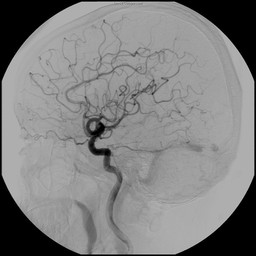 | |
|
Navigation Computerized Tomography (CT) & Magnetic Resonance Imaging (MRI) Nuclear Medicine & Positron Emission Tomography (PET)
|
Interventional Radiology is a sub-specialty of radiology that utilizes minimally invasive image guided procedures to diagnose and treat diseases in nearly every organ system. The basis of interventional radiology is to diagnose and treat patients using the least amount of invasive techniques currently available in order to minimize the risk to the patient. An interventional radiologist commonly performs both diagnostic and therapeutic procedures. Some diagnostic procedures that use IR are: angiography (imaging blood vessels to look for abnormalities with the use of various contrast), cholangiography (imaging bile ducts within the liver to look for blockages), and biopsies (taking a tissue sample from the area of interest for examining). Some therapeutic procedures that use IR: balloon angioplasty/stent (opening of narrow or blocked blood vessels using a balloon, with or without placement of metallic stents), endovascular aneurysm repair (placement of endovascular stent-graft across an aneurysm, this prevents expansion or progression of the defective vessel), dialysis related interventions (placement of tunneled hemodialysis catheters, peritoneal dialysis catheters, revision of AV fistulas and grafts), chemoembolization (combined injection of chemotherapy and embolic agents into the arterial blood supply of a tumor, with the goal of locally administered chemotherapy, slowing the "washout" of chemotherapy drug and decreasing tumor arterial supply). Angiogram of the vessels in someone's brain (beginning in the carotid artery) |
|
Jamie Mize | ENG 307T | Digital Writing | Summer 2017 | |
